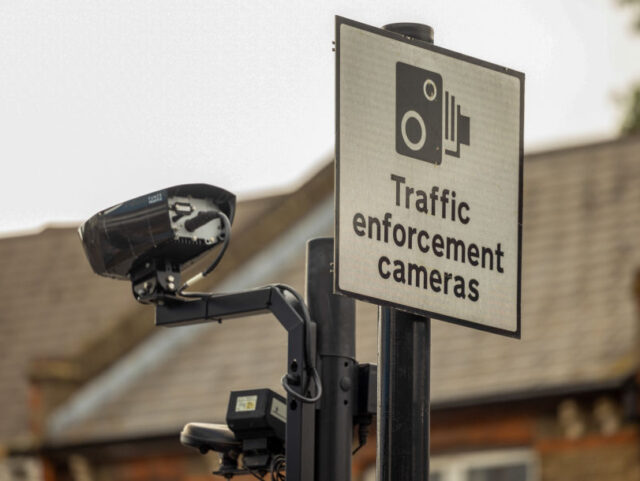Surveillance equipment and roadblocks rolled out to promote ‘Low Traffic Neighbourhoods’ are being repeatedly damaged or disabled, costing London authorities hundreds of thousands of pounds, it is claimed.
Cameras are being damaged and “pushed… to face the sky”, monitoring equipment that counts the number of cars, bicycles, and pedestrians has been smashed, and bollards to prevent cars driving on roads have been vandalised, and keeping up with repairs is incurring a hefty bill. The figure of £850,000 since 2020 comes from the UK’s left-establishment paper The Guardian, which requested information on what had been spent to repair damage to Low Traffic Neighbourhood (LTN) equipment from the city’s borough governments.
Almost half of the total was spent in just one Boroiuigh, Hackney Council, who told the paper they had spent nearly £400,000 on repairs in the period. A spokesman for the council blamed a “small minority of people” and said the money could be better spent on “freedom passes for older people, introducing more cycle parking and road safety classes in schools.”
One person cited by the report lamented the cost, but said the work had to go on because “if Hackney council stopped repairing it then you just let these people win, don’t you?”.
On the purpose of Low Traffic Neighbourhoods, The Guardian defines them as aiming to: “promote walking and cycling by filtering some local streets so vehicles can access them but cannot use them as cut-throughs.” Many media reports on opposition to LTNs and what are called 15-minute neighbourhoods accuse those who disagree with driving restrictions and more surveillance cameras of being driven by conspiracy theorists.
Time Out, for instance, notes:
The concept is ruffling more than a few feathers. One of the reasons is because the implementation of 15-minute cities would mean more restrictions for motorists – for example, by introducing more Ultra Low Emission Zones or Low Traffic Neighbourhoods. Some people argue that these negatively impact local businesses and threaten the freedom of car users.
Meanwhile, some conspiracy theorists claim that 15-minute cities would come with a greater surveillance culture, and that they would restrict people from moving between neighbourhoods. There’s little evidence to show that this would be the case.
The plan in Oxford grabbed headlines worldwide and in Rochdale LTN ‘bollards’ placed in roads to stop cars driving were turned over and burnt by upset locals on their first day of deployment.
In a separate but perhaps parallel development, another bid to restrict car usage in London by left-wing mayor Sadiq Khan has also been targeted by saboteurs, with cameras working the Ultra Low Emissions Zone being taken out in reportedly large numbers. Either unscrewed from their posts and removed or having their cables cut, a report in July reported 200 cameras had been taken out by that point, and a further report this month said over a dozen more were being done every week.
The Mayor’s office said they don’t want to discuss the damage to the cameras because it gives those attacking them “the oxygen of publicity”, but said mobile cameras could be deployed to plug gaps if necessary. It is reported London will have around 4,000 license plate reading cameras all across the system.

COMMENTS
Please let us know if you're having issues with commenting.